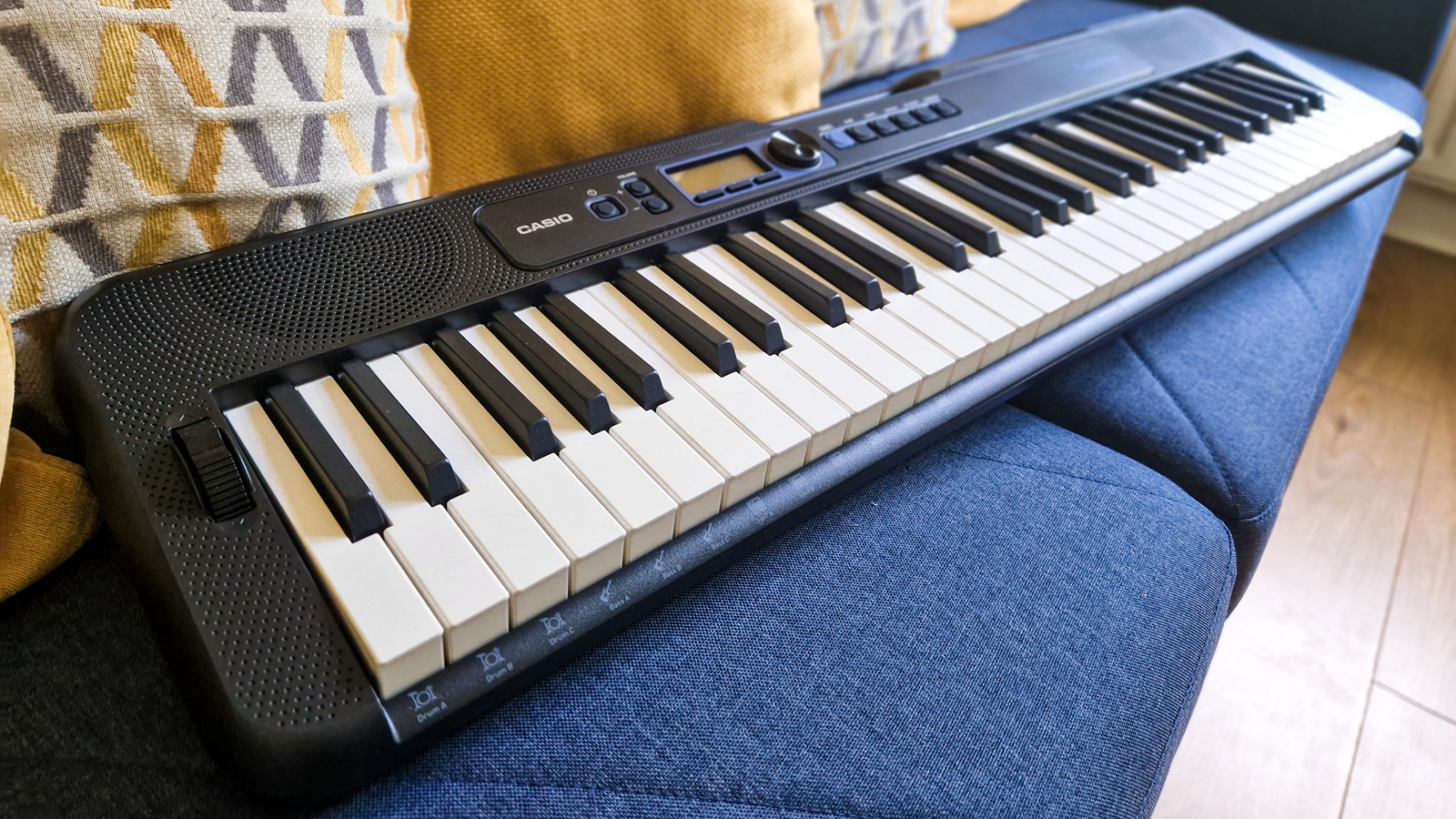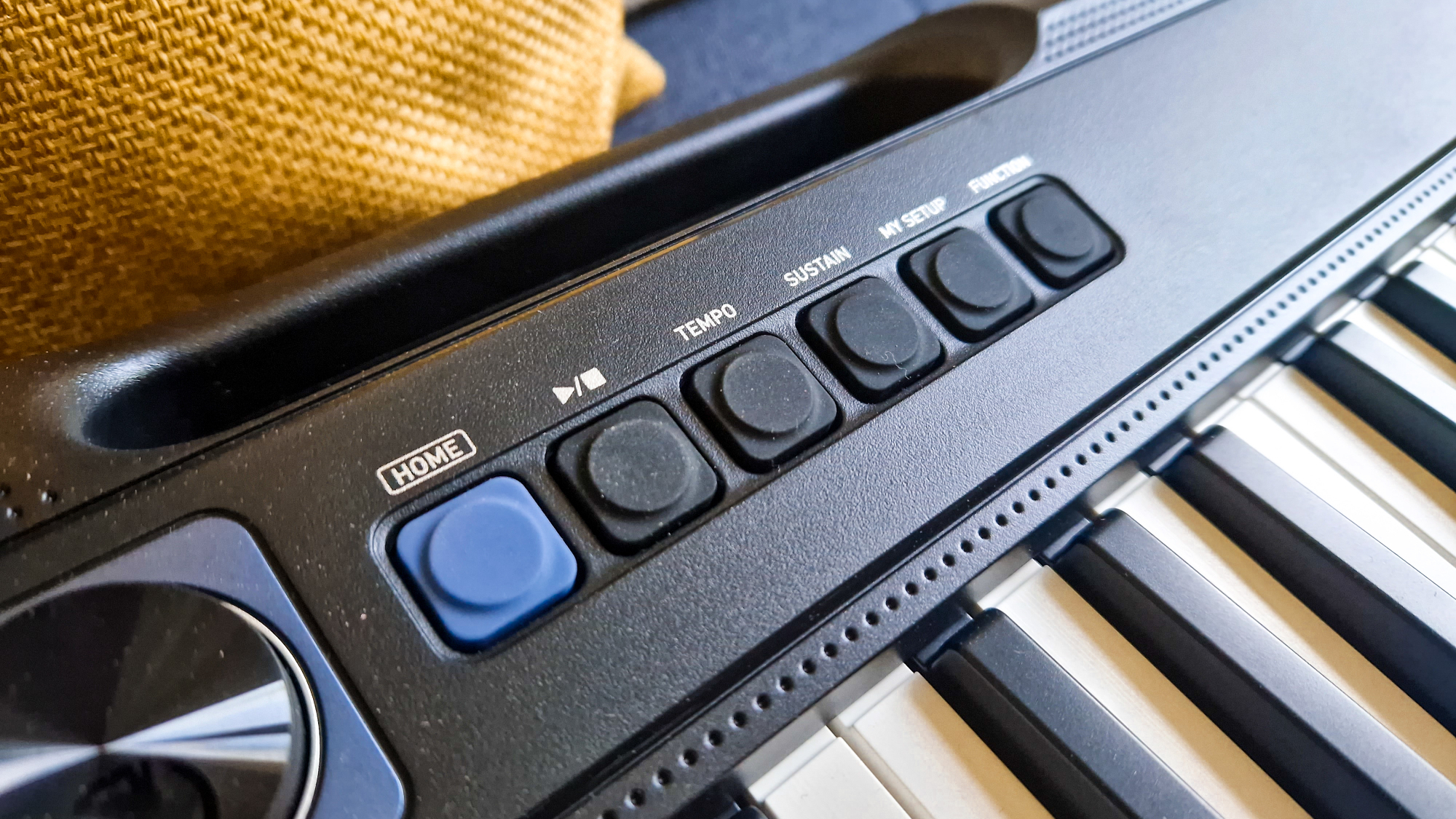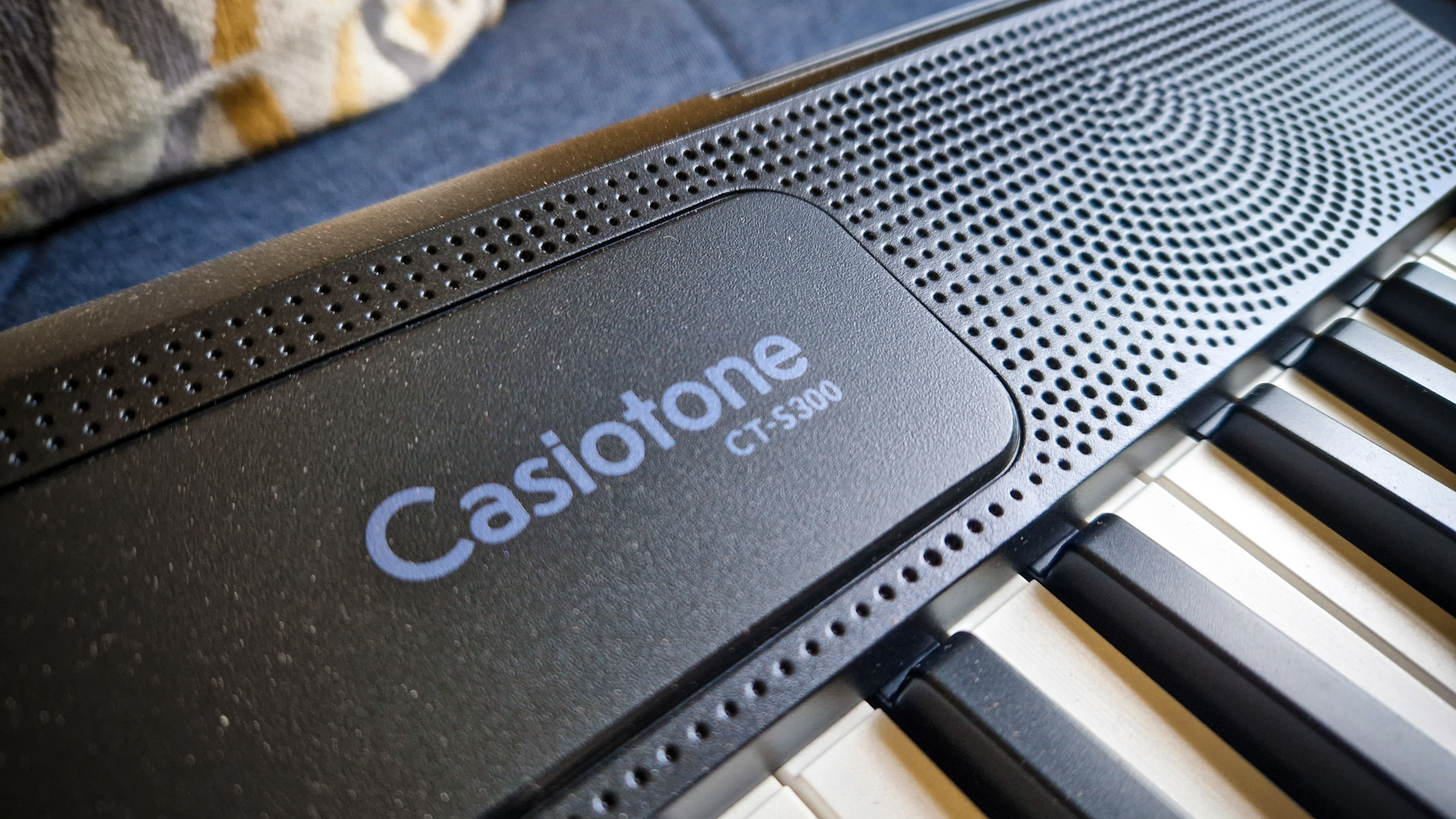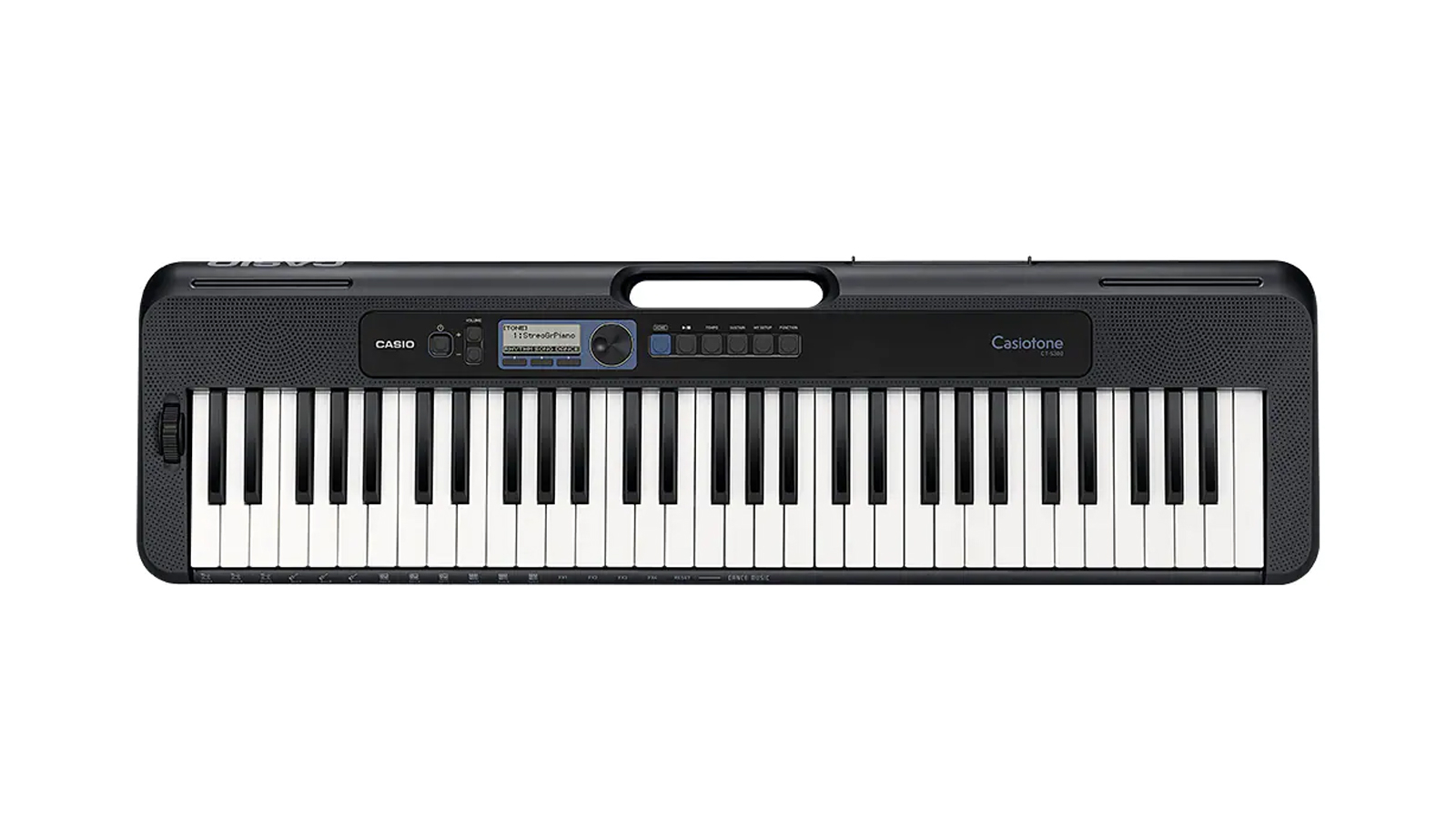MusicRadar Verdict
The Casio CT-S300 is a fun and practical beginner keyboard that offers players a plethora of voices and rhythms. Pair that with its lightweight, compact build and battery operation and this keyboard quickly becomes a contender for one of the best keyboards for budding players looking for an instrument to kick start their playing career.
Pros
- +
Well made
- +
Lightweight and portable
- +
A wealth of voices
Cons
- -
Not all the sounds are useable
- -
Not weighted keys
MusicRadar's got your back
Casio CT-S300 review: What is it?
In the '80s, the Casiotone moniker was a leading name in the world of beginner keyboards, bringing affordable, portable and great-sounding instruments to budding musicians everywhere. Today Casio continues to be a pioneering force in the budget keyboard space with their modern take on this classic series.
Sitting alongside the CT-S100, CT-S200 and the light-up LK-S250 - which will teach you how to play - the CT-S300 offers players the perfect solution to discover the basics of the instrument, as well as giving them some fun features that make learning a joy.
Boasting 61 touch-sensitive piano-style keys, a compact pitch-bend wheel, an integrated carry handle, and a lightweight, slim profile, this battery-powered Casio is designed to be a practical option for those who need a well-made keyboard that can go anywhere with them.
Locked away inside are 400 unique voices, including everything from grand pianos to electric guitar and even synth sounds. The Dance Music Mode even allows you to create memorable EDM-inspired tracks, with the ability to remix them on the fly by simply pressing different key combinations.
You can hear these sounds in stellar detail with the newly designed speaker, which, with Casio's latest equalisation technology, delivers a rather wide soundscape that defies its compact size. Better yet, the additional audio input connection allows you to plug in a media device so you can play along with your favourite songs.
Casio CT-S300 review: Performance and verdict

Playability and design
Okay, the Casio CT-S300 may not be the most exciting-looking keyboard on the market, but it does have an unfussy and uncluttered look that we appreciate - and the multiple colour options of red, black and white are a nice touch.
We have to mention just how portable this slimline keyboard is. Weighing in at a mere 3.3 kg, this featherweight instrument is easily carried by even the youngest of players and the built-in handle makes hauling it around even easier, meaning it's perfect for practicing on the go or taking to music lessons.
Want all the hottest music and gear news, reviews, deals, features and more, direct to your inbox? Sign up here.
In terms of the keys, the Casio features touch-responsive "piano-like" keys that are really designed to look like the keys found on a piano rather than feel like them. These keys aren't weighted in any way but are velocity-sensitive - meaning the volume and tone will change depending on your performance. Of course, we will always prefer the touch of fully weighted keys, but the feel of this basic Casio keyboard is actually quite endearing. The box-shaped keys feel nice under our fingers and the keyboard does a decent job of keeping up with our playing dynamics - especially when you consider the price point.

Sound
Now, that brings us to the tone. Featuring 13 cm x 6 cm oval speakers with reinforced magnets, this minuscule keyboard delivers a surprisingly large sound. Okay, it doesn't have a huge amount of bass frequencies, but there's plenty of high-end sizzle and mid-range. This sound produced is clear, crisp and not muddy - other beginner keyboards should take note.
Budding keyboardists needn't worry about running out of voices to play around with, as there are 400 tones to choose from, as well as 77 rhythms. For the most part, the voices on offer are pleasant, with the grand piano, electric piano and strings settings being among the best. As you'd expect, with this many tones available, some - okay, a lot - miss the mark. We find it hard to see us reaching for the music box, dulcimer or distorted guitar settings very often, if at all. That said, most players will only be concerned with the piano sounds, and these are more than serviceable.
All of these sounds are accessible via a full dot LCD screen and dial, which is easy and intuitive to use.

Extra features

Roland Go:Keys 61: This portable keyboard from Roland is a formidable adversary to the Casio and, in our opinion, has better sounds built in. So if you are looking for the best tones at this price point, it's worth checking out this Roland.
Yamaha NP-12: For those looking for a simple, no-nonsense keyboard, the NP-12 is the instrument for you. With its stellar piano sounds and clean, uncluttered styling, this keyboard is ideal as a gateway to learning the piano.
As with all keyboards aimed at novice keyboard players, the Casio CT-S300 is loaded with extras, some you'd expect and one you probably wouldn't. Let's start with the obvious features.
On the left-hand side of the unit, you'll find the pitch bender wheel, which can be used to mimic realistic-sounding guitar choking, sax bending, and other effects. On the rear panel, you'll find a USB to host, which turns the CT-S300 into a powerful MIDI controller. It's worth noting that this keyboard is compatible with the Casio Chordana Play app, which gives the player access to 50 in-app demo songs and downloadable MIDI files.
Right, so on to the more unusual feature. Now, we doubt the hardcore EMD enthusiasts are lining up to purchase an entry-level beginner keyboard, but in case they are, Casio has included a Dance Music Mode that lets users create EDM-inspired tracks with the touch of a button. With 12 types of dance voices, auto tension builder and effects, you can mix and match the phrases to create a techno-style song.
We'll admit it, we did enjoy playing around with this feature, but it does feel like a novelty. That said, younger players new to the instrument may enjoy the sense of achievement of hearing a song materialise from nowhere at the press of a key.

Final thoughts
For us, the CT-S300 proves why Casio are the kings of the budget keyboard category. Offering superb build quality, an accessible key action and quirky added extras, this keyboard is a brilliant first instrument, a valuable travel companion or a useful studio tool - all for an unbeatable price.
Casio CT-S300 review: Hands-on demos
Casio Music Gear
Jeremy See
Casio CT-S300 review: Specifications
- Keys: 61 Full-Size Touch Sensitive Keys
- Voices: 400 Tones
- Rhythms: 77 Accompaniment Rhythms
- Features: Dance Music Mode
- Songs: 60 Preset Songs
- Connectors: Headphone, Audio Input, Sustain Pedal Connection, USB Connector
- Power: Battery/AD-E95100 (Not Included)
- Battery power playing time: 16 hours from 6 AA Batteries.
- Dimensions: 93cm x 25.6cm x 7.3cm
- Weight: 3.3kg
- Contact: Casio

I'm a Senior Deals Writer at MusicRadar, and I'm responsible for writing and maintaining buyer's guides on the site. As part of my role, I also scour the internet for the best deals I can find on gear and get hands-on with the products for reviews. My gear reviews have been published in prominent publications, including Total Guitar, Guitarist, and Future Music, as well as Guitar World.com. I've also had the privilege of interviewing everyone from Slash to Yungblud, as well as members of Sum 41, Foo Fighters, The Offspring, and many more.
In a previous life, I worked in music retail, selling everything from digital pianos to electric guitars. I'm also a fully qualified sound engineer who holds a first-class Bachelor's degree in Creative Sound Production from the University of Abertay.
